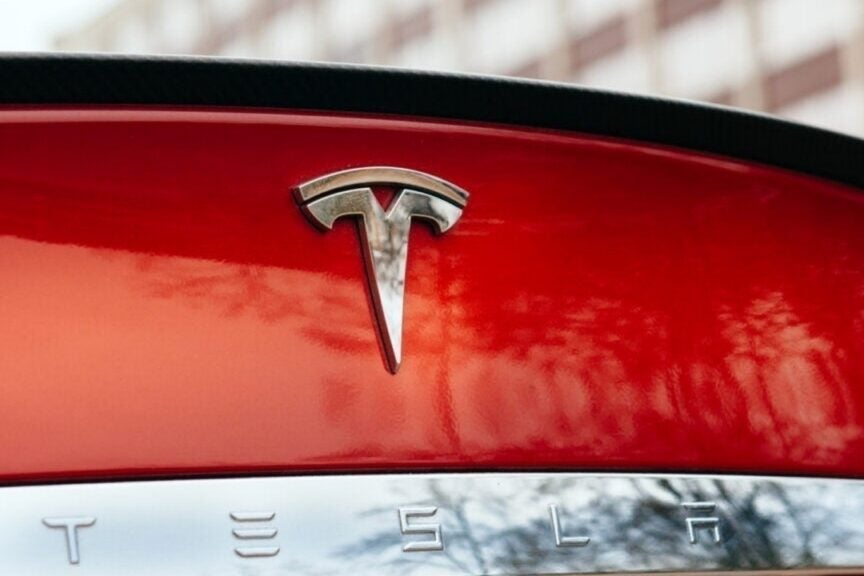Tesla’s Bold Robotaxi Vision: A Game Changer for Urban Mobility
As the anticipation builds around Tesla’s upcoming launch of its Robotaxi service in Austin this June, industry experts are weighing in on what this bold initiative could mean for the future of urban transportation. Among the most optimistic voices is Gary Black, a seasoned analyst with a keen eye on the electric vehicle (EV) sector. He envisions a transformative impact from Tesla’s Robotaxi, which aims to create a fleet of autonomous vehicles that could revolutionize how we think about ride-sharing and personal transport. However, alongside this optimism come critical questions about automotive margins and the viability of next-generation electric vehicles.
Understanding Tesla’s Robotaxi Concept
The essence of Tesla’s Robotaxi vision is straightforward: a self-driving taxi service that operates without the need for a human driver. This will not only reduce costs but could also democratize access to transportation, especially in urban settings where ride-sharing has already gained traction. Tesla’s technology leverages advanced artificial intelligence and machine learning algorithms to navigate city streets, ensuring safety and efficiency.
Key features of Tesla’s Robotaxi service include:
- Autonomous Navigation: Utilizing Tesla’s Full Self-Driving (FSD) technology, the vehicles can make real-time decisions based on traffic patterns, road conditions, and passenger preferences.
- Cost Efficiency: By eliminating the driver, Tesla aims to lower the cost per ride, making it an attractive alternative to traditional taxis and ride-sharing services.
- Environmental Impact: As electric vehicles, the Robotaxis contribute to reducing carbon emissions, aligning with global sustainability goals.
Gary Black’s Optimism and Concerns
Gary Black has expressed a distinctly positive outlook on Tesla’s Robotaxi launch, suggesting that it could significantly enhance the company’s revenue streams. He believes that the introduction of autonomous ride-sharing could potentially change the EV landscape, elevating Tesla’s position in the market.
However, Black also raises important questions regarding auto margins and the overall sustainability of next-generation electric vehicles. The financial implications are critical, as margins in the auto industry can be notoriously thin. Some of the concerns include:
- Manufacturing Costs: As Tesla ramps up production for its Robotaxi fleet, how will the costs of manufacturing impact profitability?
- Market Competition: With traditional automakers and new entrants also investing in autonomous technologies, how will Tesla maintain its competitive edge?
- Regulatory Hurdles: The robotaxi concept faces scrutiny from regulatory bodies, and any delays in approval could hinder Tesla’s rollout.
The Future of Robotaxis: A Potential Paradigm Shift
If successful, Tesla’s Robotaxi could herald a new era in urban mobility. Imagine cities where autonomous vehicles provide seamless transportation options, reducing congestion and pollution. This vision aligns with the growing demands for sustainable practices and smart city initiatives, where technology meets urban planning.
Industry Reactions to Tesla’s Robotaxi Launch
The automotive industry is watching Tesla’s Robotaxi launch with great interest. Analysts and competitors alike are keen to see how Tesla navigates this uncharted territory. Some industry experts believe that Tesla could set a precedent for autonomous ride-sharing, while others caution about the challenges that lie ahead.
In particular, the success of the Robotaxi service may hinge on:
- Public Acceptance: How willing are consumers to embrace autonomous vehicles, especially in terms of safety and reliability?
- Technology Reliability: The robustness of Tesla’s self-driving technology will be under scrutiny as early adopters begin using the service.
- Partnerships and Collaborations: Collaborations with local governments and tech firms could enhance the service’s effectiveness and ensure smoother integration into existing transport networks.
Challenges Ahead: Navigating the Road to Success
Despite the optimistic projections, the path to a successful Robotaxi launch is fraught with challenges. Tesla must address several key issues:
- Infrastructure Requirements: The deployment of a Robotaxi fleet will necessitate significant investment in infrastructure, including charging stations and maintenance facilities.
- Insurance and Liability: The legal landscape concerning liability in the event of an accident involving an autonomous vehicle is still evolving and presents a potential hurdle.
- Consumer Trust: Building trust in autonomous systems is crucial; any incidents or failures could lead to public skepticism.
Conclusion: A Leap into the Future
Tesla’s ambitious Robotaxi launch in Austin this June represents a significant leap into the future of transportation. While Gary Black’s optimism is backed by a solid understanding of the potential market shifts, the critical questions he raises about margins and the future of next-gen electric vehicles are equally important. The road ahead is challenging, yet the vision of a world where autonomous vehicles roam our streets freely is tantalizingly close. Success in this arena could not only solidify Tesla’s leadership in the electric vehicle market but also set the stage for a sustainable, efficient, and revolutionary approach to urban mobility.
As we await the launch, one thing is clear: the transportation landscape is on the brink of transformation, and Tesla’s Robotaxi could very well be at the forefront of this change.
See more Future Tech Daily

